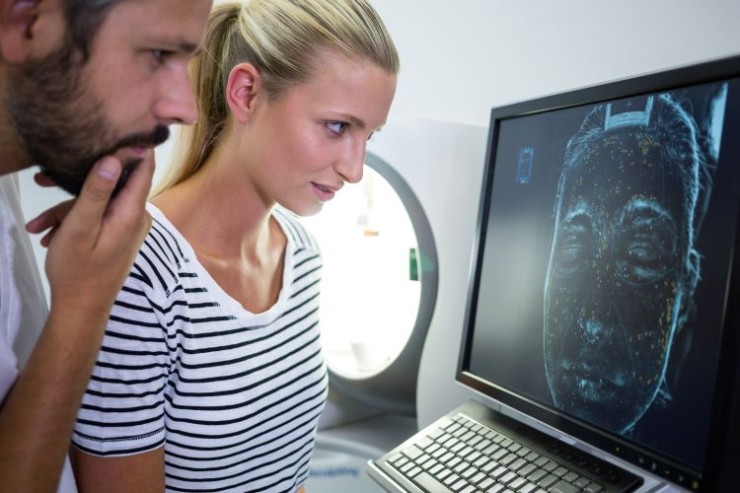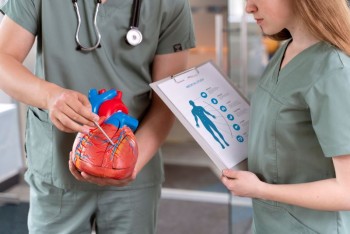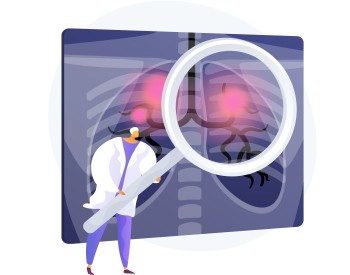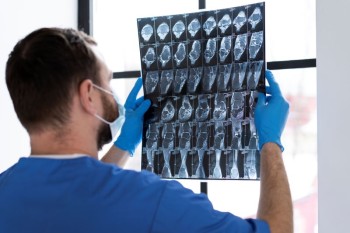
The 3D CT PNS Scan is instrumental in assessing the paranasal sinuses, including the frontal, ethmoid, sphenoid, and maxillary sinuses.
3D CT PNS Scan in India with Cost
3D CT PNS Scan in Detail
Introduction
A 3D CT PNS Scan, focusing on the Paranasal Sinuses (PNS), is an advanced diagnostic imaging procedure that provides detailed three-dimensional images of these vital structures in the head. In this article, we delve into the specifics of this imaging technique, its purposes, and how it aids in diagnosing and managing various conditions related to the paranasal sinuses.
Purpose and Significance of 3D CT PNS Scan
The 3D CT PNS Scan is instrumental in assessing the paranasal sinuses, including the frontal, ethmoid, sphenoid, and maxillary sinuses. It is commonly used to identify abnormalities such as sinus infections, polyps, structural issues, and other conditions affecting the paranasal sinus region.
When is a 3D CT PNS Scan Recommended?
This imaging procedure is recommended when a more detailed and comprehensive evaluation of the paranasal sinuses is necessary. It is often employed for cases of chronic sinusitis, nasal congestion, suspected sinus tumors, and pre-surgical planning for sinus-related procedures.
Preparation for 3D CT PNS Scan
Getting ready for a 3D CT PNS Scan involves minimal preparation. Patients may need to take off any metal objects or jewelry from the head and face area. It is essential to communicate any existing health conditions or medications to the healthcare provider.
Procedure of 3D CT PNS Scan
During the procedure, patients may be positioned on a specialized table that moves through the CT scanner. The scanner captures detailed cross-sectional images from various angles, creating a three-dimensional representation of the paranasal sinuses.
Benefits and Risks
The 3D CT PNS Scan offers high-resolution images, providing an accurate assessment of various conditions affecting the paranasal sinuses. The benefits often outweigh the risks, as the procedure is generally considered safe. The exposure to radiation is minimal during the scan.
Interpreting 3D CT PNS Scan Results
Expertise is crucial in interpreting the results of a 3D CT PNS Scan. Radiologists analyze the detailed three-dimensional images to identify abnormalities, such as sinus infections, polyps, structural issues, and other conditions affecting the paranasal sinuses. The information obtained guides treatment decisions.
Conditions Diagnosed Through 3D CT PNS Scan
The 3D CT PNS Scan is effective in diagnosing a range of conditions, including sinus infections, nasal polyps, sinus tumors, and structural abnormalities in the paranasal sinuses. The detailed three-dimensional images allow for precise identification and characterization of these issues.
Alternatives to 3D CT PNS Scan
While the 3D CT PNS Scan is a powerful diagnostic tool, alternative imaging methods like MRI or traditional CT scans may be considered based on the specific clinical scenario. Each method has its strengths and limitations, and the choice depends on the information needed for an accurate diagnosis.
Conclusion
In conclusion, the 3D CT PNS Scan is a valuable diagnostic tool for assessing the paranasal sinuses, identifying various conditions affecting this region. The detailed three-dimensional images it provides play a crucial role in guiding healthcare professionals toward accurate diagnosis and appropriate treatment plans.
Frequently Asked Questions About 3D CT PNS Scan
1. What is a 3D CT PNS Scan?
A 3D CT PNS Scan is an advanced imaging procedure that provides detailed three-dimensional images of the paranasal sinuses, aiding in the assessment and diagnosis of various conditions related to this area.
2. How long does the procedure take?
The duration of a 3D CT PNS Scan is relatively short, typically taking around 15 to 30 minutes, making it a quick and efficient imaging technique.
3. Is there any discomfort during the procedure?
The procedure is generally well-tolerated, and there is no discomfort associated with the scan itself. Patients may need to remain still during the procedure to ensure clear three-dimensional images.
4. Are there risks associated with 3D CT PNS Scan?
3D CT PNS Scan is considered safe, with minimal risks. The exposure to radiation is minimal, and the benefits often outweigh the risks, especially considering the detailed three-dimensional information it provides.
5. Can individuals with sinus issues undergo this scan?
Yes, individuals with sinus issues can undergo a 3D CT PNS Scan. In fact, the scan is often employed for diagnosing and evaluating various sinus-related conditions, providing valuable information for effective management.
6. Can a 3D CT PNS Scan detect deviated septum?
Yes, a 3D CT PNS Scan can effectively detect a deviated septum. It provides detailed three-dimensional images of the nasal structures, allowing healthcare
professionals to identify structural abnormalities, including deviations in the nasal septum.
7. Is sedation required for a 3D CT PNS Scan?
Typically, sedation is unnecessary for a 3D CT PNS Scan, as most individuals can undergo the procedure comfortably without it. However, exceptions may apply for those dealing with severe anxiety or specific medical conditions. It is advisable to discuss your situation with your healthcare provider to receive personalized recommendations.
8. How does a 3D CT PNS Scan differ from a traditional sinus X-ray?
A 3D CT PNS Scan provides more detailed and three-dimensional images compared to traditional sinus X-rays. It offers a comprehensive view of the paranasal sinuses, allowing for a more accurate assessment of sinus conditions and abnormalities.
9. Can a 3D CT PNS Scan help diagnose sinus infections?
Yes, a 3D CT PNS Scan is valuable for diagnosing sinus infections. It provides clear images of the sinus cavities, enabling healthcare professionals to identify signs of inflammation, fluid accumulation, or other indicators of sinus infections.
10. Are there any age restrictions for undergoing a 3D CT PNS Scan?
There are generally no specific age restrictions for undergoing a 3D CT PNS Scan. This imaging procedure is suitable for individuals of various age groups, including children and adults, when recommended by a healthcare provider for diagnostic purposes.
Feel free to reach out to your healthcare provider for more personalized information and guidance regarding a 3D CT PNS Scan.
(0)
Login to continue



